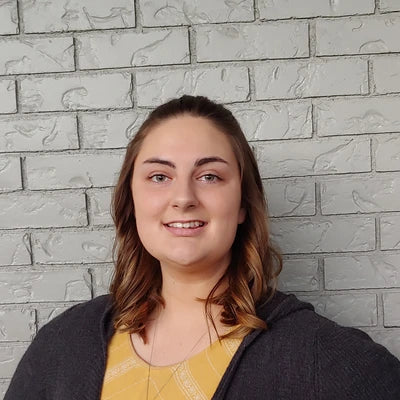Selecting the right tobacco seed variety can make or break your growing season. For experienced gardeners, this choice isn’t just about aesthetics—it’s about matching your growing environment and goals with the perfect plant genetics. Whether you’re growing for ornamental beauty, personal use, or leaf experimentation, understanding the key factors that define each variety will help you cultivate healthy, productive plants.
Understanding Tobacco Species and Types
Most tobacco grown worldwide belongs to one of two species:
- Nicotiana tabacum – The classic cultivated tobacco used for pipe, cigar, and cigarette leaves. It produces tall plants with broad, smooth leaves and is more adaptable to a variety of climates.
- Nicotiana rustica – A shorter, bushier plant with smaller leaves and much higher nicotine content, often grown for traditional or ornamental purposes.
According to the University of Florida IFAS Extension, Nicotiana tabacum dominates modern production due to its leaf quality and curing versatility, while Nicotiana rustica remains prized in certain cultural and research applications.
For home gardeners, tabacum categories such as Virginia, Bright Leaf, Burley, and Turkish (Oriental) offer the best balance between manageability and yield.
Match Variety to Climate and Soil
Tobacco thrives in warm, moderately humid conditions and well-drained, slightly acidic soil (pH around 5.8). Choose a variety that matches your USDA hardiness zone and average summer temperatures.
- Cooler climates: Short-season types like Virginia, Bright Leaf or Cuban mature quickly (around 55–65 days).
- Warmer climates: Slow-maturing varieties such as Burley or Maryland 609 produce larger leaves with robust flavor.
As the University of Kentucky Tobacco Production Guide notes, leaf quality depends heavily on local soil composition and temperature range. Aim for sandy loam with good fertility, and avoid planting tobacco where tomatoes, peppers, or eggplants have grown recently to reduce soilborne disease pressure that may persist from year to year.
Define Your End Goal
Ask yourself: Why am I growing tobacco?
- For curing and processing: Choose a large-leaf tabacum type such as Burley or Virginia.
- For ornamental display: Try ornamental use species like Nicotiana alata or Nicotiana sylvestris, which produce tall stalks and fragrant flowers.
- For seed saving and breeding: Open-pollinated heirlooms like Havana 142 or Connecticut Broadleaf allow you to collect viable seeds for future seasons.
The USDA Agricultural Research Service emphasizes that each tobacco strain’s genetic composition affects not just appearance but resistance to pests, diseases, and environmental stress—making the choice of variety critical to long-term garden success.
Consider Leaf Characteristics and Growth Habits
Each tobacco variety expresses unique physical traits. When comparing seed packets or catalog descriptions, note:
- Leaf shape: Broad for curing vs. narrow for ornamentals
- Plant height: Compact (3–4 ft) or tall (6–8 ft)
- Color and texture: From light green to deep blue-green; glossy or matte finish
- Nicotine strength and flavor profile (if legally relevant)
Experienced gardeners often experiment with two or three varieties per season to discover which performs best under their local conditions.
Balance Heirloom Character with Reliability
Heirloom tobacco seeds are appealing for their history and complexity, but they can be unpredictable. Modern hybrids often offer improved uniformity and resistance to disease. A balanced approach—planting both heirloom and hybrid varieties—lets you enjoy tradition while ensuring consistent results.
When buying seeds, always check:
- The supplier’s reputation
- Whether the seed is open-pollinated (for saving) or hybrid (for uniformity)
Key Takeaways
- Match your tobacco seed variety to your climate, soil, and growing goals.
- Prioritize reputable seed sources and proven cultivars.
- Keep detailed notes on each variety’s performance—sun exposure, growth rate, and leaf quality—to refine your selections over time.
FAQs
Q1: Can I grow multiple tobacco varieties in the same garden?
Yes. Space them at least 3–4 feet apart to prevent cross-pollination if you plan to save seeds.
Q2: Are ornamental tobacco plants the same as smoking tobacco?
Not exactly. Ornamental species like Nicotiana alata are primarily for flowers and scent, not leaf curing.
Q3: How many tobacco plants should I grow from seed?
Start 6–10 plants for personal experimentation. Each plant produces dozens of leaves and thousands of seeds.
- Everything You Need to Know About Tobacco Seeds
- How to properly store and handle tobacco seeds before planting?
- What are the ideal germination conditions for tobacco seeds?
- Step-by-step how to sow tobacco seeds (indoors, then transplant).
- What soil, sun, spacing and nutrition conditions do tobacco plants need?
- What are common growth-stage practices (topping, suckering, leaf size control)?
- What pests, diseases and grower mistakes should I watch out for?
- How and when do I harvest and cure leaves grown from tobacco seed?
- What legal, regulatory or local-gardening restrictions should home growers know?
- How do I save seeds from my own tobacco plants?
- What specialty or heirloom tobacco seed varieties are worth exploring?
- Troubleshooting: Why didn’t my tobacco seeds germinate or grow well?


















0 comments
No comments yet! Be the first to start a conversation.